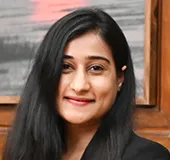Major strategic initiatives are expected as Prime Minister Narendra Modi undertakes his first trip to Iran from May 22. Before the PM’s visit, some of his senior ministers like Foreign Minister Sushma Swaraj, Shipping Minister Nitin Gadkari and Petroleum and Natural Gas Minister Dharmendra Pradhan had visited Tehran and tied up the loose ends, making the PM’s visit all the more significant.
It is well acknowledged by policy makers in Delhi that Iran is a regional power in West Asia with direct and indirect influence in Iraq, Syria, Lebanon, Bahrain, Yemen and large parts of the oil-rich eastern parts of Saudi Arabia that is home to the restive Shia population. The Gulf monarchies supported by the US have often accused Iran of supporting its Shia brethren in its neighborhood to topple the Sunni Arab regimes or rulers favourable to the Gulf kingdoms, even when there was insufficient proof of its involvement.
Iran has, of course, intervened to protect its interests and those of the Shia and Alawaite populations in Iraq and Syria, be it through the ‘Sadrists’ (army of Muqtada al-Sadr) or by dispatching its paramilitary wing, the Al-Quds force in Syria, or the Hezbollah in Lebanon. Iran’s interventions in Bahrain and Yemen have come more in reaction to events rather than as preemptive aggressive acts.
The decades long sanctions imposed on Iran by the US, EU and the UN did cripple the economy, but did not disrupt the political system. The Iranian people did not revolt and overthrow the regime of the Ayotallah and of the clerics, much against the expectations of the Western governments that the harshest sanctions would achieve.
Having successfully negotiated a peaceful resolution to the nuclear imbroglio with the P5+1 (US, UK, France, China, Russia + Germany), Iran has now re-entered the international trade and commerce mechanisms with a healthy balance of over $100 billions in credit that is now unfrozen in various banks around the world. The central bank of Iran has now acquired an IFSC code.
India, which had sharply reduced its oil imports from Iran by over 40% during the era of sanctions, has now resumed an enhanced supply from Tehran. Even during the worst period of sanctions, India maintained a healthy, but difficult trading relationship coupled with high-level political contacts and exchange of visits. The visit of PM Manmohan Singh for the NAM summit (August 2012) in Tehran, despite pressure from the US, was a major political gesture of support to the beleaguered country.
PM Modi would now be building upon that goodwill and is in a great position to propose some strategic initiatives.
First and foremost would be to declare the building up of an ‘India-Iran Economic Corridor’ that would link us to Afghanistan and Central Asia. That would mean reviewing the progress of work on the Chabahar port, due to be completed by this year-end, according to Shipping Minister Nitin Gadkari. Next would be to resolve the issue of building the railway line from Chabahar to Zahedan, an Iranian town on the border of Afghanistan that will then link up with the Zaranj-Delaram highway built by India in Afghanistan. India considered building the railway line first and finally shelved it on grounds of its huge cost, i.e., over a billion dollars. There are reports that Iran will now build the railway line with 50% costs shared by India, which should be a win-win situation for both.
Second is to resolve and finalise the much-negotiated India-Iran-Afghanistan Transit Agreement. Afghanistan has already agreed to the Indian draft with some minor changes, but Iran is reported to have given its own draft.
Third would be to start the work of drilling for gas in the Farzad B Gas fields that is now re-allotted to the ONGC led consortium, after much flip-flop.
Fourth would be to resolve the pending payments issue for the oil imports by India, which is in the range of $6.5 billion. As Iran wants the payment in Euros and most European banks are still unclear about the US stand on ‘secondary sanctions’, the payments are stuck in the pipeline. But, this would of course get resolved sooner than later as France and Germany are impatient to start investing in Iran.
Fifth would be to explore the possibility of importing Iranian Gas through the sea-link route of Iran-Oman-India. This would put an end to the much-speculated Iran–Pakistan–India gas pipeline that has failed to take off. As India promises to shift to a gas- based economy this would be an urgent need.
Sixth would be to strengthen our bilateral ties in the field of education, science and technology, trade and commerce. Iranians have always sought greater openings in our higher institutes of learning, particularly in the fields of nanotechnology, biotechnology, space, aeronautics and missile technology. Iran would press for relaxation of restrictions on student visas in these fields.
On the trade-front, we have to strive hard to increase our basket of goods for exports as the present trade balance is heavily skewed against India. Iran would greatly benefit from our service sectors such as the IT, finance, banking and insurance, health and pharmaceutical industries. Infrastructure and construction industry would also be a very important sector open to growth in Iran. Aviation and automobile sectors are already being cornered by the west. Russia is traditionally big in the nuclear industry in Iran and also in equipping its military forces. Chinese President Xi Jinping during his visit to Tehran in January gave a quantum push to the relationship by signing a 25-year cooperation pact in the fields of economy and the military. President Rouhani said of the meeting that the 17 agreements signed between the two countries would boost their trade to $600 billion in the next ten years. So that leaves India with small windows of niche sectors for development.
On the political front, Iran and India face a common enemy — externally sponsored terror groups, such as the Taliban and the Islamic State by the former; Lashkar e-Toiba and Jaish e-Mohammed by the latter. Pakistani terror outfits, Lashkar e-Jhangvi and Sipah e-Sahiba, have also carried out scores of attacks on Shia population in Pakistan. Working out a common strategy against such groups is a pressing need for both countries.
Back on the ‘mainstream’, Iran is now well poised for economic takeoff, and with right kind of inputs from India, Iran could benefit immensely. With Iran’s clout in regional affairs in West Asia, Afghanistan and Pakistan, India could significantly leverage its own strengths. This is a partnership with immense potential and both need to work on their strengths. And PM Modi has a way of overcoming trust deficits and that should work immensely in his favour.
This commentary originally appeared in Catch News.
The views expressed above belong to the author(s). ORF research and analyses now available on Telegram! Click here to access our curated content — blogs, longforms and interviews.




 PREV
PREV


